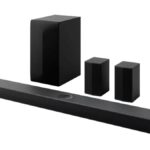Google has hinted that it will be unveiling a new direction for its Material design language with Android 16.
The company has just released the session list for its forthcoming Google I/O 2025 event, which is set to take place on Tuesday 20 May and Wednesday 21 May.
Perhaps the most exciting tidbit to emerge from this otherwise somewhat dry list is the pre-announcement of a new design language for Google’s software over the next few years: Material 3 Expressive.
What do we know about Material 3 Expressive?
Naturally, Google isn’t spilling anything major on its new design language (or should that be ‘evolution’?), aside from its name, which has appeared in Google code in recent weeks.
What it does mention in the brief Google I/O session overview is that it will represent “the future of Google’s UX design” with a “new emotional design patterns to boost engagement, usability, and desire for your product” – a reminder that Google I/O is really targeted at developers above all else.
Google promises to run through its new guidelines for Material 3 Expressive, as well as sharing design files and alpha code at the event.
Last month we learned that Google was rejigging its Settings app for Android 16 with a new ‘expressive’ design, which seems to entail toggle switches with checks and crosses, settings entries placed in distinct cards, arrow icons for subpages, and a repositioned header that displays more items at a glance.
Material 3 Expressive: What’s in a name?
So what can we infer, if anything, from the Material 3 Expressive name? It suggests that this isn’t an all-new version of Google’s design language, for one thing.
The original Material Design emerged way back in 2014, standing in contrast to Apple’s chintzy iOS skeuomorphism (which mimicked real materials) with a flatter, more minimalist design.
Then came Material Design 2 in 2018, which offered more customisation options for manufacturers and a new custom font in Google Sans.
Material Design 3 (aka Material You) followed in 2021 with the Google Pixel 6, bringing us into the era we’re in now. This brought slicker animations, chunkier buttons, and those gorgeous custom UI themes.
Google naming its latest design language Material 3 Expressive suggests that we’re not quite ready for Material Design 4 just yet. Material Design 3.5, then?
Read the full article here











